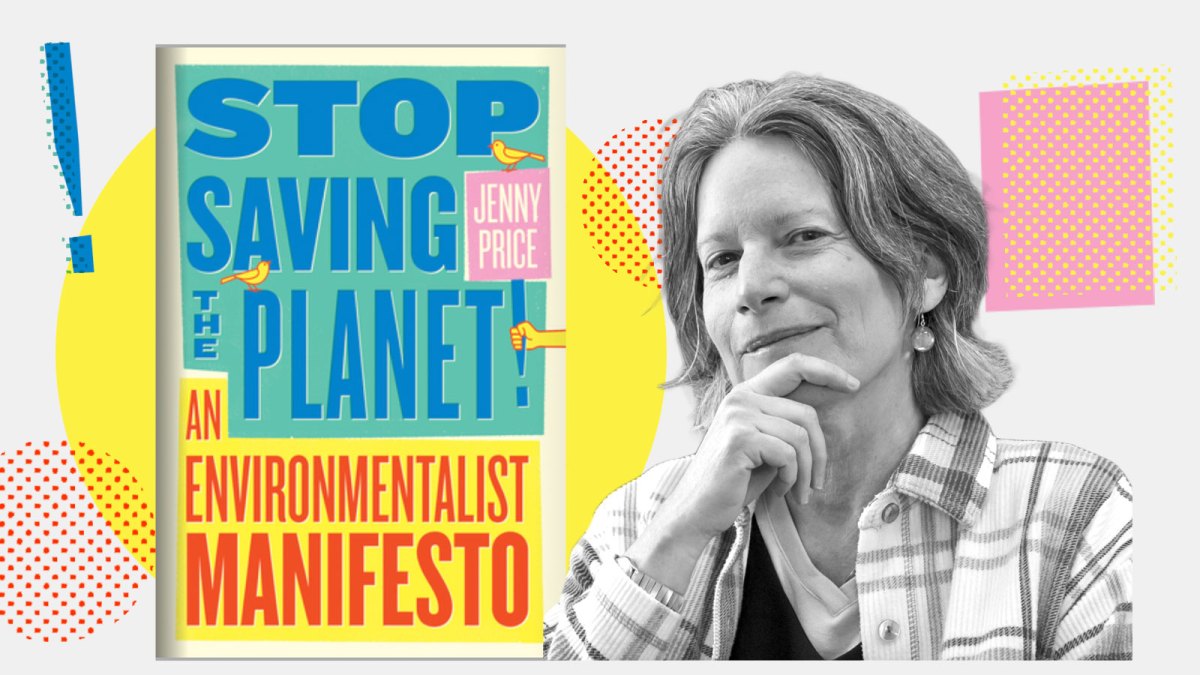Don’t bother with metal straws – the turtles aren’t interested in your “help”. While your efforts may be well founded, using a paper straw isn’t going to save turtles or solve climate change.
In a book purportedly written as “an environmentalist manifesto”, it seems counterintuitive to tell people to quit doing environmentally friendly things. But Stop Saving the Planet by Jenny Price, claims this is exactly what the environmental movement needs. With dry and irreverent humor, Price gives eleven reasons why trying to save the planet within a capitalist, consumerist society is not the best idea. At the end of the day, the planet needs effective solutions centered on socioeconomic equity, not band-aids for proverbial bullet wounds.
 Grist / W.W. Norton / Igor Heifetz
Grist / W.W. Norton / Igor Heifetz
Price’s very short book focuses on two main themes. The first is “Green Virtue” (GV). This is the idea that you can save the planet by talking about saving the planet. GV references the “greener-than-thou” mentality that some environmentalists espouse, even though their “greener” behavior is still sustaining harmful economic practices and systems. The second is “Whole Planetude” (WP). This is the idea that any and all strategies to save the planet are effective because they’re better than doing nothing. Saving the environment is synonymous with saving the planet, whatever that is, everywhere for everyone.
She contends that a combination of these mantras has contributed greatly to the proliferation of ineffective, unsustainable, and inequitable green schemes marketed by and sold in our consumerist society. It’s a lot to cover in a book shorter than most budget bills. Take the Tesla, a popular symbol of environmentalism in America. Well-off people may buy a Tesla to drive, guilt free, forgetting all of the materials and energy required to manufacture an electric car in the first place.
GV and WP are both at work here. This practice ignores how consumerism causes climate change and allows the consumption of even more “stuff”, or the things we buy, which is GV. It’s also supposedly “helping” save the planet, except at a high cost to the local environments where all the lithium and steel ore were mined and refined, which is WP. Price’s point is that the existing framework of environmental policy panders to capitalism and corporate interests. God forbid Ford or ExxonMobil take some losses after poisoning the planet for generations.
How do you reconcile balancing the needs of the economy and the environment? Price believes it’s impossible because “the goal of our economy is to maximize growth and profits – not your health and well-being”. Turns out you can’t buy your way to a clean, green future.
As Jenny Price says: “WTF?”
Part of the problem is how we view ‘The Environment’ as some separate, wild entity that operates independently of our lives. This is a key aspect of WP. In reality all those materials needed for that new electric vehicle are taken directly from the Earth. The environment is central to the economy, so to protect the economy we must first protect the environment. And if we do this correctly, we’ll be protecting people too.
Price says environmentalists are widely disliked in the US because the onus for solving climate change is put on the backs of the general public, most of whom can’t afford to buy an EV. The worst-polluted communities are majority low-income and communities of color, and they rarely see environmentally positive change. So when environmentalists champion purchasing fuel-efficient vehicles to demonstrate GV, palpable disinterest is understandable. When corporations and public agencies have acted for centuries against the best interests of low-income populations, allowing rampant pollution in deference to economic gains, disenchantment with the system is rational.
EVs do require massive inputs, but across their lifetime, have fewer impacts than a combustion engine run car. Transportation is the largest source of American carbon emissions, so it’s plausible that this is one of those issues we can buy our way out of, or at least help with investments.
“We are not all in this together” but any proposal to solve climate change, a global problem, requires global cooperation (WP). Price believes the best plan would “democratize the economy and… fight climate change”: an overhaul of existing economic structures – no biggie.
While Price’s book starts with what not to do, it ends with a long list of things to do. The list is too exhaustive to enumerate, but the ideas center around engaging oneself introspectively and outwardly. Inspect one’s own relationship to the environment, governance, and “stuff”. Engage externally too, with local politics and neighborhood groups.
Maximize time and effort, not by picking easy, highly visible things to challenge (like the straws symbolizing GV) but the most effective for the planet. Almost half of the Giant Pacific Garbage Patch is composed of synthetic fishing line, not straws. So why aren’t we holding fishing conglomerates accountable in the same way?
With current societal regression in “almost every… environmental crisis”, Price just wants a plan, though she doesn’t offer one herself. Above all else, Price stresses that saving our home, as daunting as it seems, is achievable through collective action, grit, and a sense of humor.